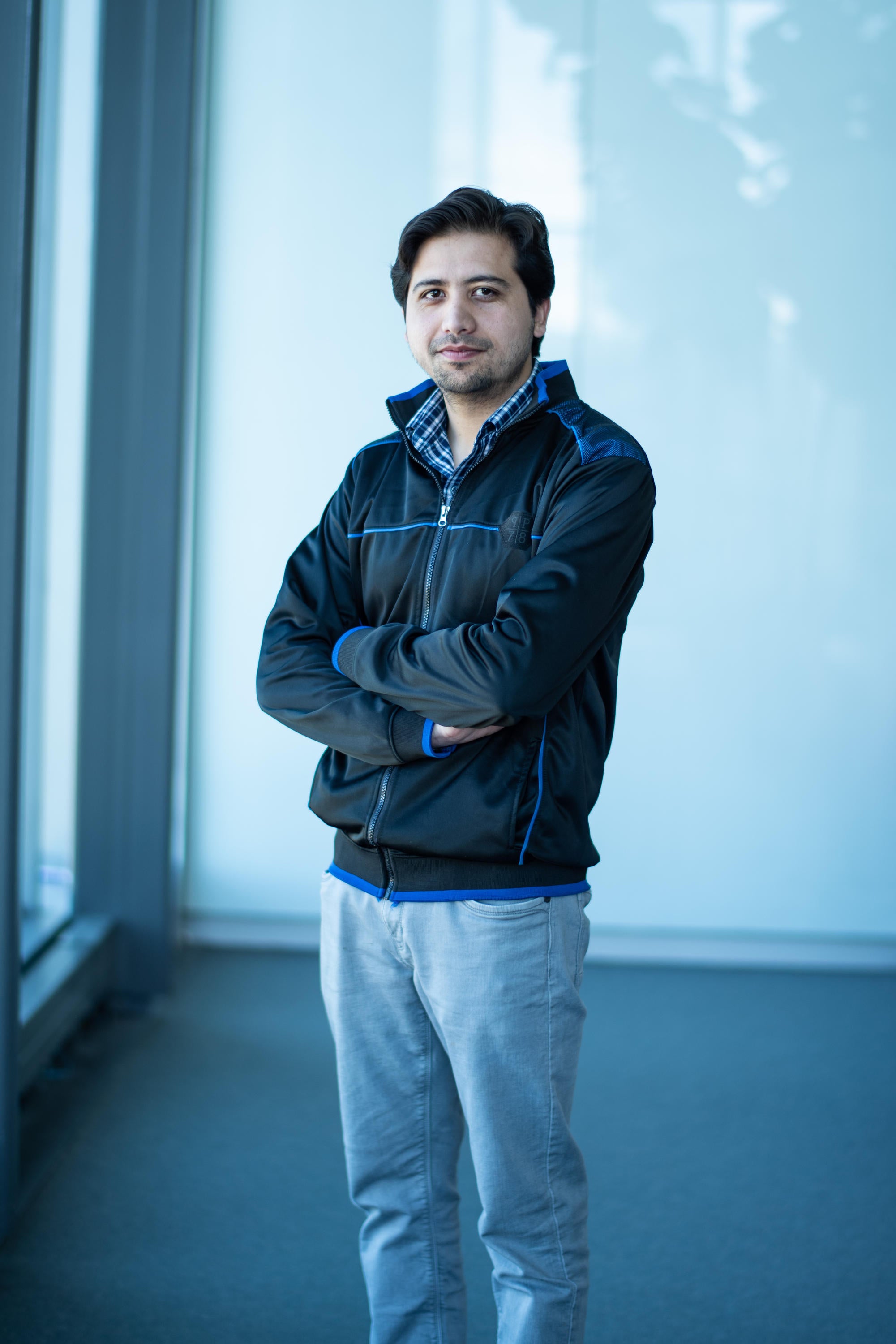
The future is quantum, and it needs to be “perfect” if we are going to trust our security and data with it.
So says Mohd Zeeshan, an electrical and computer engineering PhD student and member of the Institute for Quantum Computing (IQC) at the University of Waterloo. Zeeshan is studying entangled photon sources under the supervision of IQC faculty member Michael Reimer, an assistant professor in the electrical and computer engineering department.
Zeeshan is fascinated by semiconductor quantum dot structures that generate pairs of entangled photons (particles of light) on-demand. Researchers have generated such entangled photons from quantum dots in the past. The problem, Zeeshan explains, is that quantum dot structures always have some asymmetry or defects which degrades the entanglement.
Working with a team of researchers from IQC, the Department of Electrical and Computer Engineering and the Department of Physics and Astronomy (both also at the University of Waterloo) and the National Research Council (NRC) of Canada, Zeeshan has proposed a device that will correct for any asymmetry in the quantum dot shape by applying a quadrupole electric field. In layman terms, it will zap the quantum dot on four sides to reshape the bound electron and holes (also called excitons).
“It’s like shaping a ball of dough to make it perfectly round,” he explained. “You apply a corrective potential on each side of the quantum dot. You may have to squeeze and stretch the exciton until you get perfect symmetric structure.”
Zeeshan is devoted to refining his idea because he sees his research as enabling our future. Entangled photons, he explains, will be paramount for secure quantum encryption. It will be used in the near future to enable secure communication networks that we will use daily for everything from private conversations to online transactions.
Zeeshan is confident that the team’s proposal proves the idea in theory. He has already fabricated a prototype of the proposed device at the Quantum Nanofab facility. His next task? To run tests at the University of Waterloo’s Quantum Photonic Devices Lab over the next few months. Zeeshan is looking forward to testing his theory.
The electric field solution has been proposed, with different methods, in the past, he notes. By using his quadrupole process, Zeeshan believes he can correct the asymmetry of quantum dot structure while still maintaining the brightness of generated entangled photons, which has been a challenge in past methods.
The paper Proposed scheme to generate bright entangled photo pairs by application of a qudarupole field to a single quantum dot was publishedin Physical Review Letters on June 7, 2019.